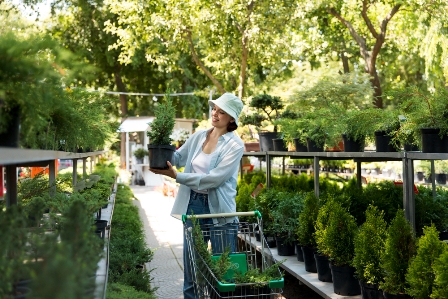Maintaining a beautiful outdoor space often comes with a hefty time commitment. However, with the rising popularity of low-maintenance landscaping, homeowners are discovering a way to simplify their outdoor chores without compromising the aesthetics of their surroundings.
In this article, we’ll delve into the world of low-maintenance landscaping, exploring its benefits, essential elements, design principles, tools, seasonal maintenance tips, common mistakes to avoid, and real-life success stories.
Benefits of Low-Maintenance Landscaping
Time-saving
One of the primary advantages of low-maintenance landscaping is the significant time savings it offers. By choosing plants and features that require minimal care, homeowners can enjoy a stunning outdoor space without dedicating countless hours to maintenance.
Cost-effective
Beyond time savings, low-maintenance landscaping is a cost-effective solution. Reduced water consumption, fewer landscaping tools, and lower maintenance needs contribute to long-term financial benefits.
Environmentally friendly
Opting for low-maintenance landscaping often involves choosing native, drought-resistant plants and implementing eco-friendly practices, contributing to a more sustainable and environmentally conscious outdoor environment.
Essential Elements of Low-Maintenance Landscaping
Drought-resistant plants
Selecting plants that thrive in local climates with minimal water requirements is a cornerstone of low-maintenance landscaping. These plants not only survive with less water but also contribute to a resilient and sustainable garden.
Mulching
Mulching is a key practice in low-maintenance landscaping. It helps retain soil moisture, suppress weeds, and enhance the overall health of the garden.
Smart irrigation systems
Implementing efficient irrigation systems, such as drip irrigation or smart sprinklers, ensures that plants receive the right amount of water without wastage.
Designing a Low-Maintenance Landscape
Strategic plant placement
Thoughtful placement of plants can minimize the need for constant pruning or rearrangement. Grouping plants with similar care requirements simplifies maintenance.
Hardscaping features
Incorporating hardscaping elements, like gravel paths or stone patios, reduces the need for frequent maintenance while adding aesthetic appeal.
Choosing the right materials
Opting for durable and low-maintenance materials for features like fences and outdoor furniture ensures longevity and reduces the need for replacements.
Tools and Equipment for Low-Maintenance Landscaping
Low-maintenance lawnmowers
Investing in lawnmowers with easy maintenance requirements simplifies the process of keeping your lawn trimmed and neat.
Efficient trimming tools
Selecting tools that require less manual effort and provide precise trimming contributes to a more efficient and hassle-free landscaping experience.
Automated cleaning devices
Robotic or automated cleaning devices can handle tasks like leaf removal or gutter cleaning, reducing the need for manual labor.
Seasonal Maintenance Tips
Spring cleaning
A thorough spring cleanup sets the tone for the rest of the year, removing debris, pruning plants, and preparing the garden for the growing season.
Summer strategies
Implementing strategies like proper mulching and strategic watering during the summer months helps maintain a healthy and vibrant landscape.
Fall preparations
Preparing the garden for winter by cleaning up, protecting vulnerable plants, and adjusting irrigation systems ensures a smooth transition into the colder months.
Common Mistakes to Avoid
Overcomplicating the design
Avoiding overly intricate designs simplifies maintenance and reduces the risk of overwhelming yourself with complex landscaping tasks.
Neglecting plant care
Even low-maintenance plants require some care. Neglecting basic care routines can lead to issues that could have been easily prevented.
Ignoring climate considerations
Failing to consider local climate conditions can result in the selection of plants that struggle to thrive, leading to increased maintenance needs.
Frequently Asked Questions (FAQs)
Choosing low-maintenance plants involves considering local climate, soil conditions, and care requirements. Consulting with local nurseries or gardening experts can provide valuable insights.
Low-maintenance landscaping emphasizes strategic design and plant selection, ensuring a beautiful and sustainable garden with minimal effort.
Initial costs may include investing in low-maintenance tools, materials, and potentially professional services. However, these costs are often offset by long-term savings in time and maintenance expenses.
Seasonal maintenance frequency depends on factors like climate and specific plant needs. Generally, a thorough cleanup in spring and fall, with occasional checks in between, suffices.
Yes, many landscaping professionals specialize in low-maintenance designs and can assist with the initial setup and ongoing maintenance of your outdoor space.
Conclusion
Low-maintenance landscaping is a game-changer for homeowners seeking a balance between a beautiful outdoor space and simplified chores. By understanding the essential elements, adopting efficient tools, and learning from real-life success stories, you can transform your landscape into a haven that requires minimal effort to maintain. Embrace the possibilities of low-maintenance landscaping and enjoy a stress-free outdoor experience.









Find Us on Socials